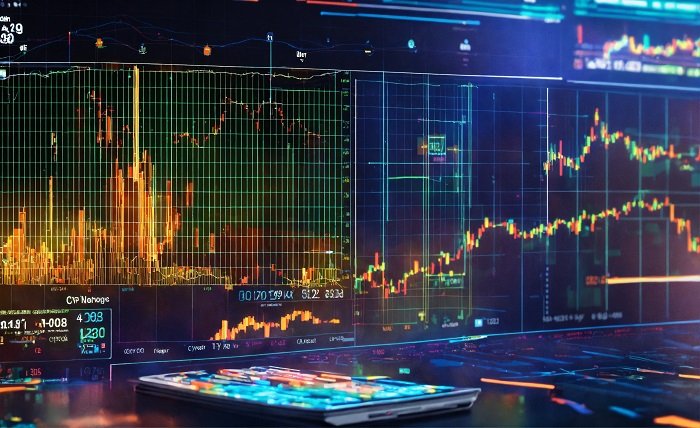Let’s admit something upfront, currency comparison sounds dry. It sounds like something you’d see in a dusty economics textbook buried under cobwebs. But if you’re trading on a platform like Stockity, comparing currencies isn’t just useful. It’s essential. It’s the difference between being a lucky guesser and a calculated risk-taker.
Because here’s the truth: every trade you place in the forex market is a bet on one currency rising over another. That means you’re constantly comparing. EUR versus USD. GBP versus JPY. AUD versus CAD. Two currencies, head-to-head, and you’re the one picking the winner.
So the better you understand how to compare them, on a real, data-driven level, the better your chances of making smart moves instead of hopeful guesses.
Currency Pairs: A Tug of War, Not a Solo Show
The biggest mistake beginners make? Thinking in isolation.
They say things like, “The Euro is strong right now.” But that means nothing until you add context. Strong compared to what? The dollar? The yen? The peso?
Currencies don’t float on their own. They’re always part of a pair. Always battling. When you open a EUR/USD chart on Stockity trading web, you’re not looking at just the euro. You’re watching how the euro performs relative to the U.S. dollar.
Think of it like watching two boxers in a ring. One might be fast, but if the other is stronger, the match changes. It’s not about who’s “good”, it’s about who’s better, right now.
Key Metrics to Compare Like a Pro
Okay, so how do you make this comparison in a way that actually helps you trade?
Here are the signals smart traders watch when sizing up two currencies on Stockity:
Interest Rates – Central banks are always moving the needle. Higher interest rates often attract foreign investment, strengthening a currency. Compare the interest rate outlooks of both currencies in the pair.
Inflation – Is one economy burning too hot? Inflation can hurt a currency’s value unless the central bank steps in.
Employment Data – Jobs data (especially in the U.S.) can shake up currency values quickly. It’s a real-time measure of economic strength.
Political Stability – Currency strength doesn’t live in a vacuum. Uncertainty or elections in one country can make the other currency more appealing.
Trade Balances – If one country exports way more than it imports, its currency may rise due to demand. Compare the trade stats of both countries to see who’s winning.
Not All Currency Pairs Are Created Equal
Let’s get something straight: just because you can trade a currency pair doesn’t mean you should.
There are three main categories on Stockity:
- Major Pairs – Like EUR/USD or GBP/USD. They are more reliable overall, highly liquid, and closely traded.
- Minor Pairs: These are less common but nonetheless significant, such as EUR/GBP or AUD/JPY.
- Currency pairs that are considered exotic include the South African Rand and the Turkish Lira. They are more unpredictable and move erratically.
If you’re new or still learning, stick with major pairs. Why? Because the more people are trading a pair, the clearer the trend usually becomes.
The Chart Is a Battlefield
Once you’ve picked your pair, open the chart. This is where the comparison turns into decision-making.
Make use of these resources to gain clarity: The Relative Strength Index (RSI) indicates whether a currency is oversold or overbought. You can determine which currency is rising higher over time with the use of moving averages. MACD: Excellent for identifying changes in momentum between the two.
And don’t forget candlestick patterns, they tell emotional stories between buyers and sellers in the currency war. Every wick and body has meaning.
Practical Scenario: EUR/USD
Let’s say inflation in Europe is cooling off, and the U.S. just dropped interest rates. That might mean the euro is gaining strength over the dollar. But then you notice a surprise jump in U.S. jobs data.
What happens? The dollar spikes back.
So if you’re comparing these two and you saw the jobs data coming? You could’ve traded accordingly. No guessing. Just reading the room right.
Trading Isn’t Luck. It’s Language.
And currencies? They speak loudly, if you know what to listen for.
Comparing currencies isn’t a back-office task. It’s front and center on Stockity trading web. Whether you’re a daily trader or just dipping your toes, mastering the comparison game is how you survive the volatility and find real opportunity.
Final Word: Be the Translator
The market doesn’t explain itself. It won’t hold your hand. But it does leave clues.
Stockity gives you the platform, the data, and the pairs. Your job is to make the call.
Want to stop guessing and start understanding currency moves? Open a Stockity account today and sharpen your trading instincts by comparing the world’s currencies, one pair at a time.
